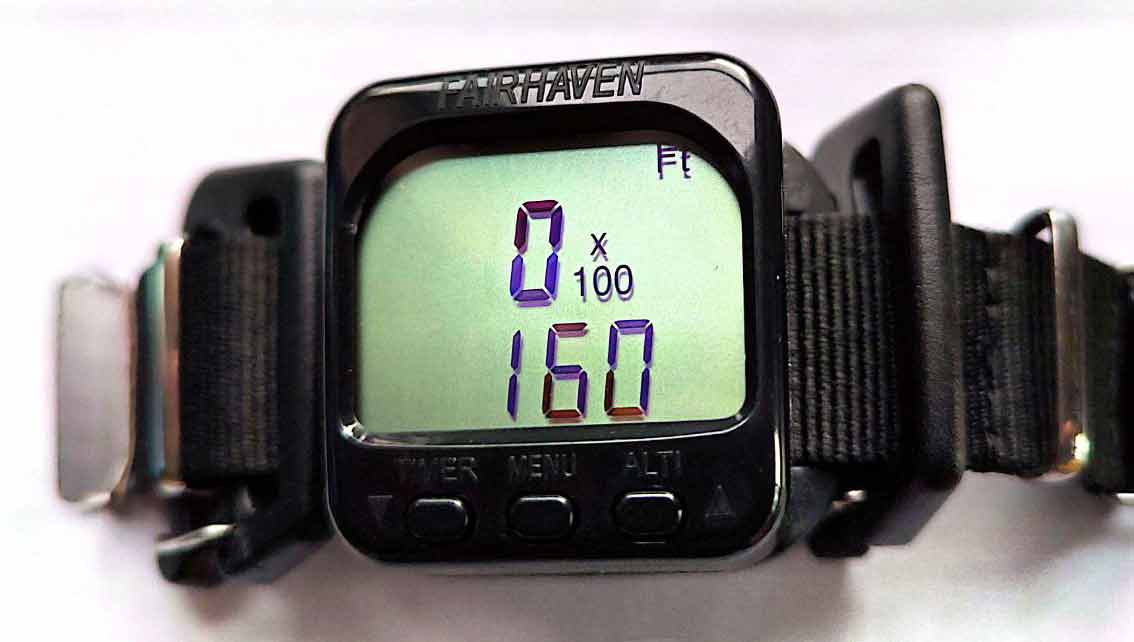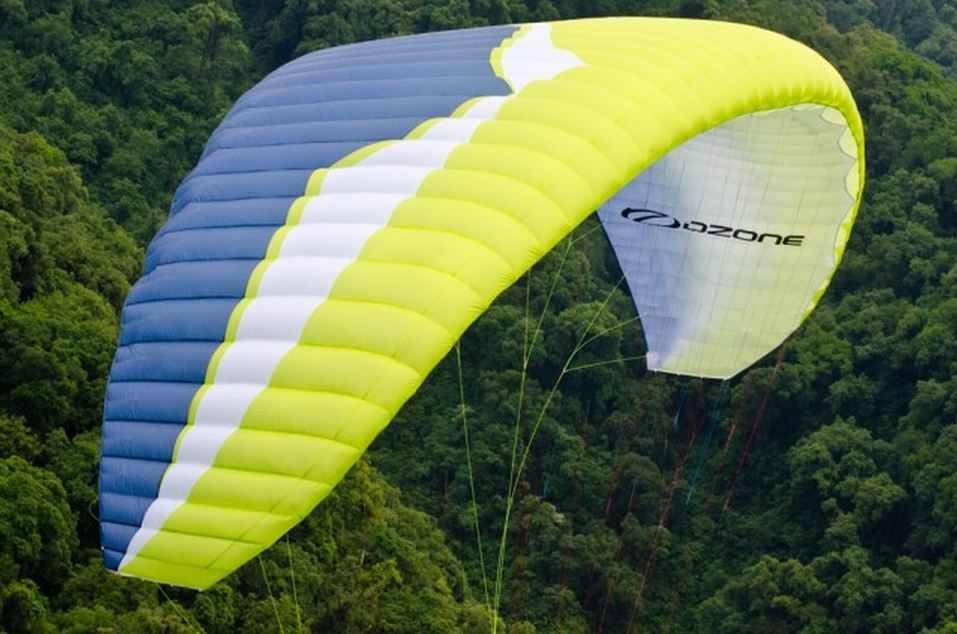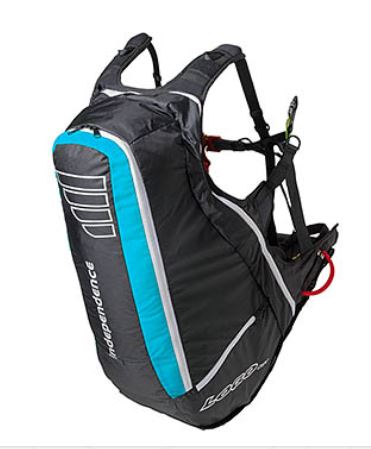Review from Skywings mag October 2013
Colin Fargher reports
THE EN B CERTIFICATION
RANGE 15 BY FAB THE
BIGGEST MARKET SECTOB
for any paraglider
manufacturer, lt is
effectively split into two
with high- and low-end
models offered by most
manufacturers and some
offering three or four, ln
recent years a lot of
technical advances have
made their way from the
competition scene down
through the certification
systems to the kind of
wings everyday club pilots
are likely to fly in the EN C
and high-end B classes,
As a result there have been
marked differences in handling
and performance across the EN
B range.,, until this year when
a number of manufacturers
married their performance-
enhancing technology to entry-
level EN B wings. Ozone's Buzz
Z4 and Gin's Atlas (reviewed in
August) both being cases in
point, But who are these wings
really aimed at, and what are
they really capable of?
Being a fairly experienced pilot
(hang gliding since'86,
paragliding since'98 and
microlighting since 2009) but one
with low recent annual
paragliding airtime (kids, family,
work, other interests) I
qualified for the 'Who?'bit, At
heart I'm a total free-flying XC
addict and covet the recent
performance enhancements of
the higher-end gliders, But I'm
not at all keen on their potential
to scare the crap out of me in
turbulence or embarrass me on
launch, And let's face it, if you're
hungry for your first 100km
under a paraglider, you will be
flying in shit-or-bust turbulence
at some point.
Are these wings really capable
of a 100km or more XC?
Absolutely, and with
considerable ease! I'll tell you
how, but first a quick
description. Since the full tech-
spec and manual are available
online I won't bore you with a
detailed description, other than
to say that Ozone's Buzz Z4 is a
complete redesign from the
previous 23, There's a new
aerofoil section, semi-closed cell
openings supported by the new
(to this class) rigifoil plastic
leading-edge inserts, and a
three-riser system with the C
lines branching near the top to
connect to the D tabs,
Happily for those of us who
launch from gravel or rocky
areas, or occasionally tread on
our lines, they are sheathed
where they need to be, The
three-riser system does make
things simpler, when keeping
the wing planted on the ground
or attempting a B-line stall for
example, and the split As make
big ears a doddle, The
sophisticated internal structure
of the wing looks complicated
and I have no idea how it
works, but it results in a very
solid and compact-feeling wing
overhead, And the 2:1 speed
system is a joy to use,
Ground handling
Launching is so easy it can
catch you out if you're not used
to it, Forget about keeping it up;
keeping it on the ground is
what you'll have to re-learn.
Brake travel is quite long, and
this and the stand-up nature of
the leading edge makes it
necessary to use the rear risers
to keep the glider on the deck
in windy conditions., The wing
comes up straight and true
with little effort, passing the
drag phase easily to sit securely
overhead with no tendency to
hang back or overshoot, In this
respect I have often felt entry-
level wings to be a little more of
a handful due of their deeper
chord, but the Z4 is much
better than any of the older
wings I've tried in this category,
In the air
My first flight was at a very
familiar site near the coast with
strong and gusty (14 - 22 mph)
winds from out-of-phase wave, I
immediately felt at home, The
wing was very easy to control,
didn't skitter about in the
smaller stuff or rock back too
much in strong gusts,
Occasionally, pinned by strong
surges, I needed the bar to
extract myself and was pleased
to find the Z4 accelerated really
well, reminiscent of the higher-
performance Swift I'd put time
on few years ago,
0ther gliders on the hill
included a Vibe, a Swift and a
brand-new Delta 2, Although I
had to coneede speed to the
niftier Swift and Delta 2 my
sink rate was never matched,
and I consistently sat 200ft
above my nearest rival. Ozone's
Russell 0gden explained that,
like most wings these days, the
Z4 is trimmed to fly at max
glide, and with a little brake
you're at min sink, Trim felt
quite slow to me although at
99kg all-up I was in the mid-to-
top end of the 85 - 105 kg range
of the ML model, Obviously the
new aerofoil section is very
efficient, but probably
somewhat thicker than those of
its bigger brothers the Swift
and Delta 2,
Two days later I was setting up
on launch in Tre Pizzi, central
Italy, for a completely different
kind of flying. Conditions were
never that rough, but there
were occasionally some very
strong and tight climbs and I
never felt out of my depth, The
Z4 always did exactly as
commanded, with progressive
brake pressures building from
light to pretty heavy at the
extreme end, Ozone believe it's
important to prevent
inexperienced pilots from
being too heavy-handed and
reaching the stall point too
easily, For me, I'd prefer a
slightly lighter finish to the end
of the brake travel.
That said, the first half of brake
travel is light and is the most
useable sector for all but the
most rip-roaring thermals, The
wing can be slowed down
considerably and still turns
nicely, giving a climb rate which
is competitive with anything out
there, I flew XC every day with
three pilots on much higher
rated low-end EN C machines, I
was only disadvantaged by their
speed and glide at speed, The Z4
will keep up with everyone in
terms of glide but will arrive later
than its higher-performance
brethren, Accelerating past half
bar meant losing out on glide,
but up until that point there's
little in it,
At cloudbase a useful spread of
speed and an easy-to-use
speedbar are indispensable,
Exploring different areas of a
cloud to max out your height
but not get sucked in is really
important for XC flying, and the
Z4 was so much easier to use in
this way than previous gliders
of this genre I've flown.
With ears in and full bar the
descent rate was adequate for
anything I encountered; the Z4
felt stable and fast, The ears
pop out immediately on their
own on release, as you'd expect
from a glider in this category.
Handling
Being at the higher end of the
weight range I found the wing
easy to turn, even into strong
thermals. The Z4 has a
tendency to self-centre in the
cores if you trust it, tightening
up the turn in the weaker or
sinky side of the circle and
straightening up in the surges
all on its own! It's possible to
slow up quite a bit and still get
it to turn well, especially with a
bit of weight shift which it
responds well to,
Stabitity and security
Feedback is a bit of a personal
thing, Some like more, some less.
The Z4 gives plenty but it's more
subtle than I'm used to, which
just takes a little dialling into,
Thankfully this also translates
into a very steady and secure
feeling in turbulence, There's
very little rocking about
overhead, which for long flights
in strong conditions really does
minimise fatigue,
Performance
0n two (into-wind) occasions I
wasn't quite able to match the
distances of the some of my
Italian friends, but one day I
matched them at 80 km and
could have gone further had I
not promised to be home before
midnight! The only real
difference was that I couldn't
get there as fast as them
I should also note that the
harness I used was a big old
baggy, draggy model. No doubt a
sleek new pod harness would
enhance both speed and and
glide, I have one on order and
will report on the difference that
makes in a subsequent edition.
Packing up
Like most new gliders with ribs
and reinforcements, etc, you
really do need a concertina bag
to put it away properly with any
kind of ease, All these gliders
should come standard with one
- they are a pain to pack up
without one,
Summary
You don't need a hot ship to fly
big distances these days when
the nice people at Ozone have
kindly given us an entry-level
wing with ample performance,
What you do need to do is adapt
your flying style, be patient on
glide, be sensitive in light lift
(one of your big advantages on
this wing), stay high and
choose the right lines in the air,
The Buzz Z4 will take you a
long way in relative comfort
and increase any pilot's
confidence, In conditions which
might otherwise be offputting
on a hotter ship, the Z4 will
flatter your abilities and keep
your mind focused on flying a
decent XC,





